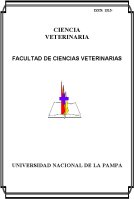Hypoglycemic effect of Verbesina encelioides
Keywords:
Verbesina encelioides, HypoglycemiaAbstract
Human beings and animals, specially canine and feline, are the species in which Diabetes mellitus has been more frequently diagnosed. Due to the need of finding alternative sources of hypoglycemic drugs and in order to get new drugs with this property, the effect of the aqueous extract of heads of Verbesina encelioides (Ve) was studied on glycemia levels in common mice and in transitory hyperglycemic once. In both assays animals were unfed for 15 hours. The different groups of common mice received an oral doses of 2, 3 and 4 g of aqueous extract of Ve per kg weight. After 6 hours glycemia was determined. The control group only received the vehicle. The glycemia levels in animals treated with 2 and 3 g/kg were significantly smaller to those of the control group (P0.01). The 4 g/kg dose was lethal for all mice. The effect of the administration of 2 g Ve per kg weight on mice was evaluated. After 30 minutes, each mouse received an oral dose of 3 g of glucose per kg of weight, to become transitory hyperglycemic mice. The control group only received the vehicle and glucose. Glycemia was determined 1, 2, 3 and 4 hours after glucose was administered. These values were related to the basal glycemia levels. The differences between glycemia and basal values was significantly smaller in the group treated than in the group control (P0.01)Downloads
Downloads
Published
How to Cite
Issue
Section
License
Al momento de enviar sus contribuciones, los colaboradores deberán declarar , de manera fehaciente, que poseen el permiso del archivo o repositorio donde se obtuvieron los documentos que se anexan al trabajo, cualquiera sea su formato (manuscritos inéditos, imágenes, archivos audiovisuales, etc.), permiso que los autoriza a publicarlos y reproducirlos, liberando a la revista y sus editores de toda responsabilidad o reclamo de terceros , los autores deben adherir a la licencia Creative Commons denominada “Atribución - No Comercial CC BY-NC-SA”, mediante la cual el autor permite copiar, reproducir, distribuir, comunicar públicamente la obra y generar obras derivadas, siempre y cuando se cite y reconozca al autor original. No se permite, sin embargo, utilizar la obra con fines comerciales.




.jpg)

4.png)


7.png)



